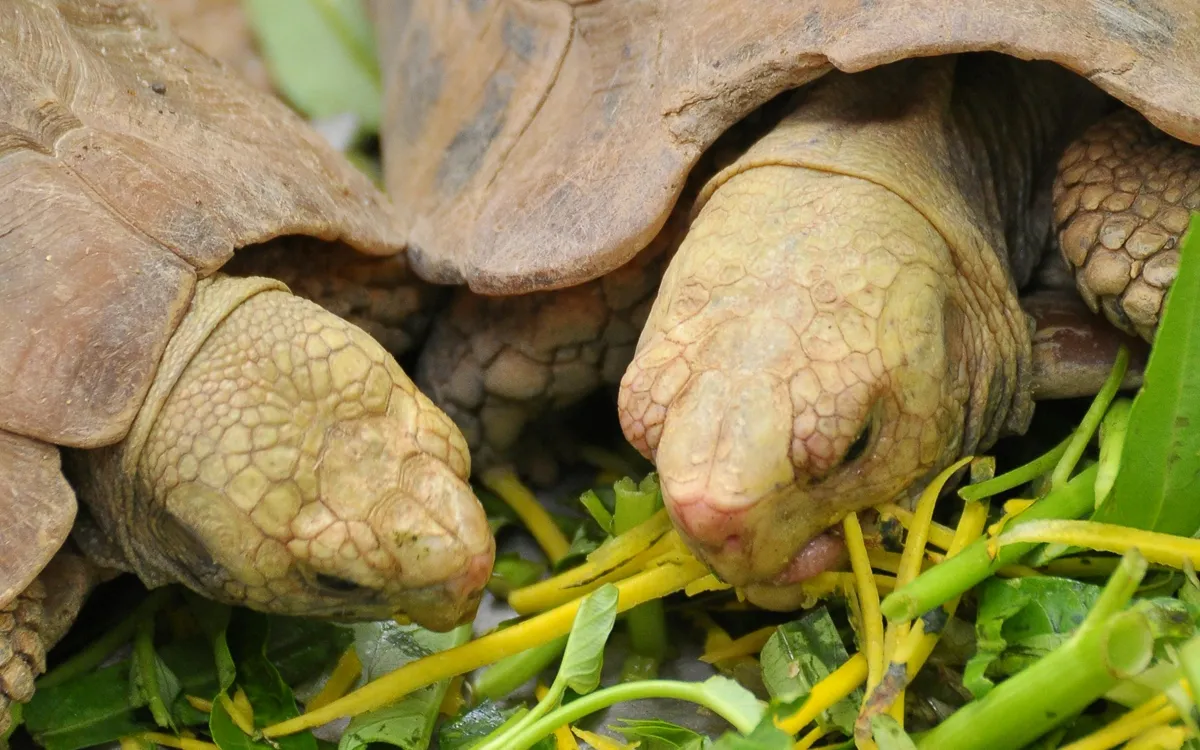Raising turtles may seem simple at first glance, but there’s more to it than meets the eye—especially when it comes to crafting their „menu.“ You can’t just grab random leftovers from the fridge. As a responsible turtle owner, understanding their dietary preferences and habits is key to keeping them happy and healthy.
Table of Contents
Do turtles have a favorite food?
Let’s start with the basics: the top 10 turtle-approved delicacies! On the list: pork, beef, mealworms, small fish, shrimp, loach, animal organs, cooked egg yolk, bloodworms, and maggots. With such a spread, turtles could practically moonlight as gourmet critics of land, sea, and air! Don’t let their small size fool you—these little creatures have surprisingly adventurous appetites.
What does a turtle eat?
Though turtles are labeled omnivores (capable of munching greens and chomping meat), they’re not the universal garbage disposals of the animal kingdom. Their dietary needs vary by species. Some lean carnivorous, others prefer plant-based meals. Avoid a one-size-fits-all „mom-style“ feeding approach.
For herbivorous turtles, a daily diet of plain lettuce won’t cut it. Mix it up with diverse veggies, fresh fruits like melons or pears, and unsalted soybean products. After all, turtles have refined palates too!
Prioritize protein (especially for Juveniles)
Attention omnivorous turtle keepers: Young turtles crave high-protein diets. Load up their plates with meat, fish, and insects. Don’t hold back—this is their prime growth phase! As they age, gradually taper protein intake and introduce more fiber. Even adult turtles need a little help maintaining their „waistlines.“
Do turtles eat meat?
Carnivorous turtles are true „apex predators“ of the tank. Small fish, shrimp, and even hatchling birds are no match for their voracious appetites. Watching them eat is like observing a live episode of „Turtle vs. Wild“—if released into nature, they’d likely claim the title of „Wilderness Survival Champion“ in no time.
But as a responsible owner, stick to clean, safe prey. Avoid messy surprises like diarrhea from questionable snacks. High-quality commercial carnivore pellets are a smart backup—they’re nutritious, balanced, and hassle-free.
Beware of "toxic treats"
While turtles might eat anything, you shouldn’t feed them everything. One golden rule: No Salt! Turtles aren’t salt-tolerant—their kidneys can’t handle it. Many owners unknowingly offer salty treats like ham sausage, thrilled by their pets’ enthusiasm. But imagine your turtle’s kidneys screaming for mercy after months of sodium overload! Excess salt is deadly, so always choose unsalted, additive-free options.
Can pet turtles eat the same diet as wild turtles
Many turtle owners wonder: „Wild turtles hunt live prey—why does it make mine sick?“ True, wild turtles chase fish and shrimp as instinct demands, but they also battle parasites and diseases daily. Your pampered pet, however, is acclimated to cushy captive life. Letting it hunt live prey risks hidden dangers like parasites. Keep their meals clean, safe, and parasite-free—your turtle’s resilience isn’t what you think!
How long can turtles go without eating?( A Seasonal Science)
Adjust meals to the calendar:
- Spring/Autumn: Feed every 2–3 days.
- Summer: Daily or every other day (peak appetite!).
- Winter: Let them hibernate undisturbed—no snacks, just peace.
In short: Turtles are the „stealthy foodies“ of the pet world. They may seem low-key, but their diet demands serious attention. To be a top-notch turtle parent, nail the daily details—balance indulgence with nutrition, and your slow-paced gourmet will thrive.
Remember: A healthy turtle isn’t just a hungry one. Prioritize their health over their appetite!









One comment
Fiverr Affiliate
I am really inspired along with your writing abilities and also with the structure for your weblog.
Is that this a paid subject or did you modify it yourself?
Anyway keep up the excellent high quality writing, it’s rare to see a great weblog like this one nowadays.